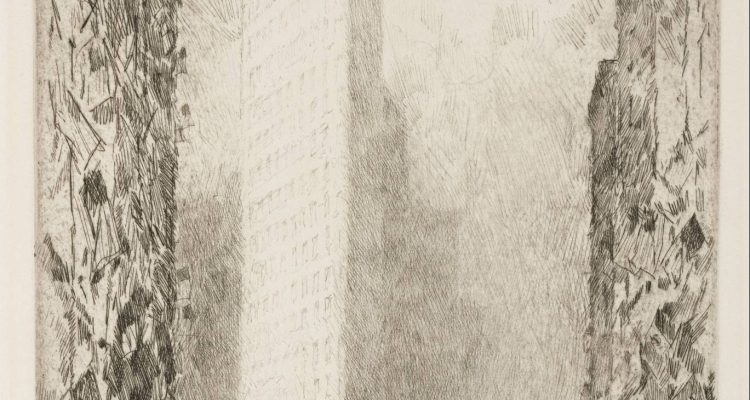In 1885, Congress dedicated Feb. 22 to a celebration in honor of George Washington’s birthday. This marked the first time the United States created a federal holiday that commemorated a person’s birth. This tradition continued for nearly a century when, in 1971, Congress moved the date to the third Monday in February. This allowed for the celebration of both Washington’s birthday and that of Abraham Lincoln, whose birth date rested on the twelfth. Yet, the placement doesn’t just allow for the celebration of two of our most memorable presidents; it also allows for a celebration and day of remembrance for all those who have held our nation’s highest office.
This etching, entitled “Washington’s Birthday,” was created by Childe Hassam in 1916 and depicts a New York City street bursting with fanfare. The dedication is obvious by its title: it is meant to be a day of commemoration, and the topic of celebration is George Washington himself. Interestingly, however, while carriages line the streets and flags fly high along the city’s skyscrapers, the imposing figure in this drawing is New York’s Flatiron Building, an architectural landmark to this day. But where is the president?
By this work’s release, Washington had been dead for 117 years, which surely allows its creator some artistic leniency. But despite this, it would be odd if no part of the scene included him, his likeness, his monument or his symbolism. Yet, this is the case we have. Without the title, this work would be indecipherable in terms of the inspiration for the celebration.
Why not include Washington? The man was our first president, the one who commanded our army during the American Revolution, who set hundreds of precedents on how a chief executive should act and the one who provided stability to the union at its inception. With these accomplishments to celebrate, why portray only a street in New York on his assigned day?
Perhaps what is on display is not what he did when he was alive, but his legacy. It is not of what he created, but what remains. This street in New York, the Flatiron Building, the people and the waving flags and carriages are what still exist in his absence. This work is not a view of him; in fact, it’s not even a view of those who cherish him. It is a view of our country’s might and fortitude, still standing long after he is gone.
If this is true, I think his message goes for us all. While we certainly have our whole lives ahead of us, what really marks our spot on the rolls of history is what endures. What we can change that lasts longer than our lives is what outlives our image and is precisely what we will be remembered for. Our everyday actions are important, yes; but, like Washington, that which survives turmoil, uncertainty and our own demise is what matters most.


Leave a Reply